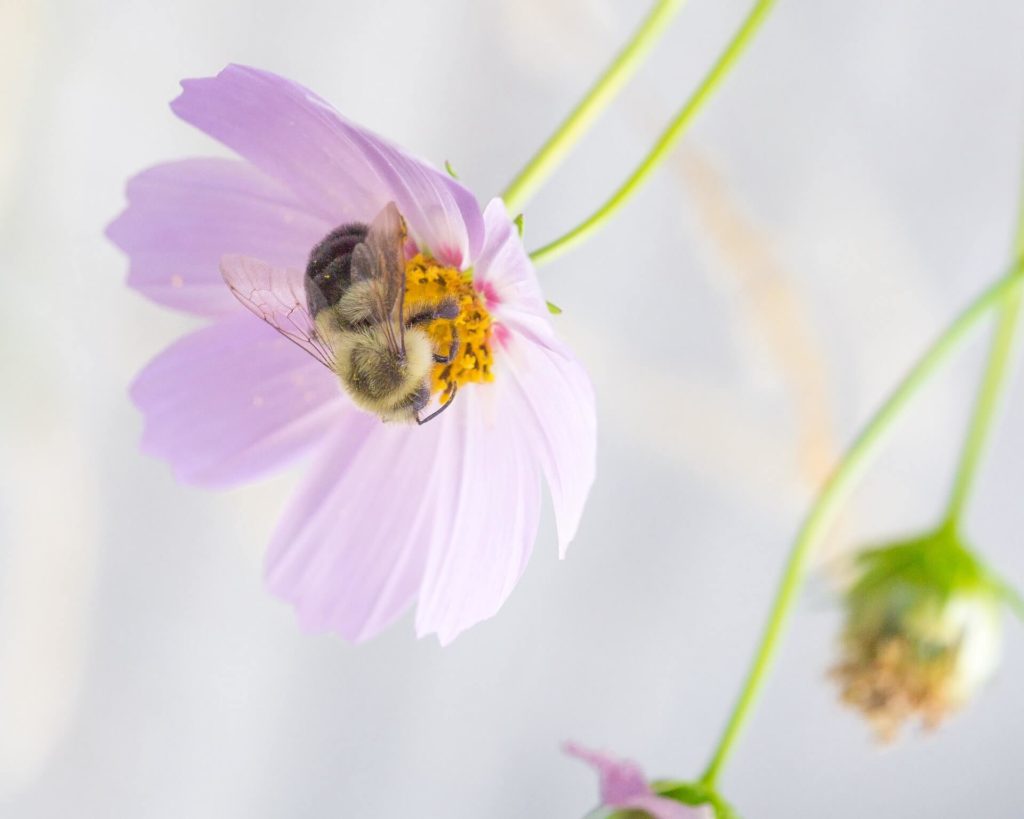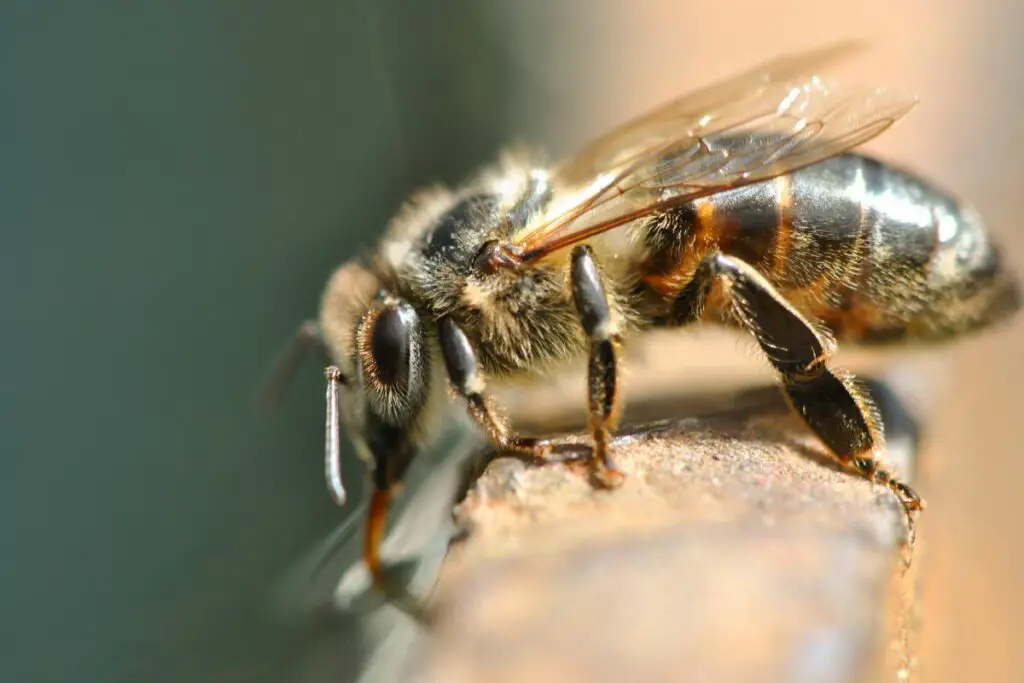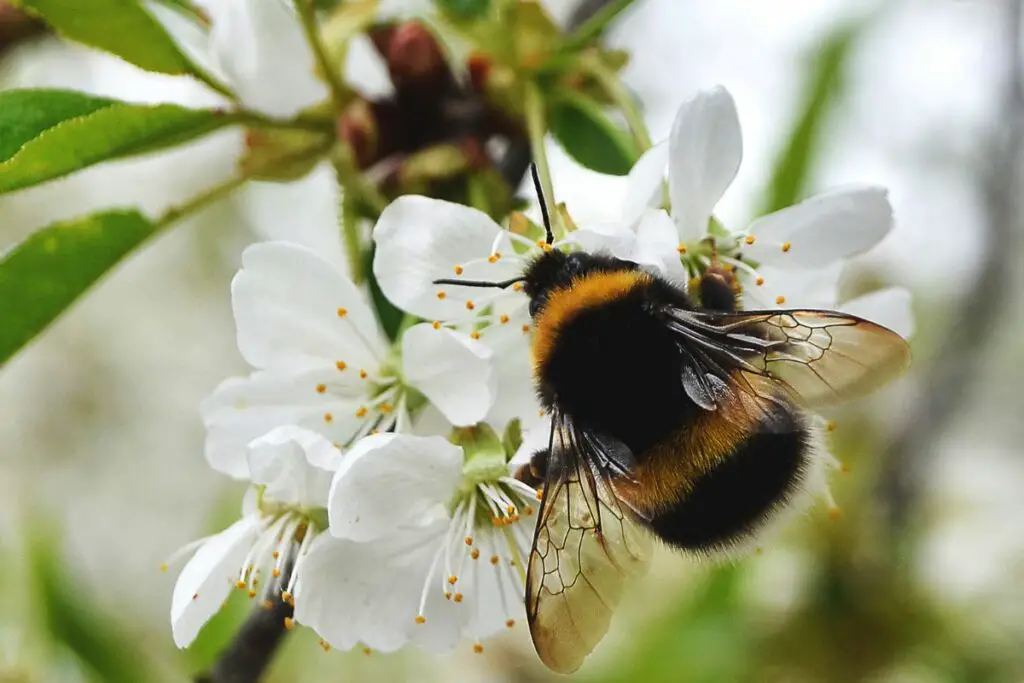Last updated on January 19th, 2024 at 03:17 pm
We all see bees out in the garden or going for a walk. These furry little creatures buzz around so fast it’s hard to see what they’re doing, but thanks to science we now have a much better understanding of bee behaviour.
Bees are flying insects and are close cousins to wasps and ants. Bees have a hairy body, six legs, two antennae, two compound eyes, and three ocelli (ocelli help bees register light and navigate around using the sun).
More than 20,000 species of bees exist around the world today. Of these thousands of species, the honeybee is, without doubt, the most documented species of bee.
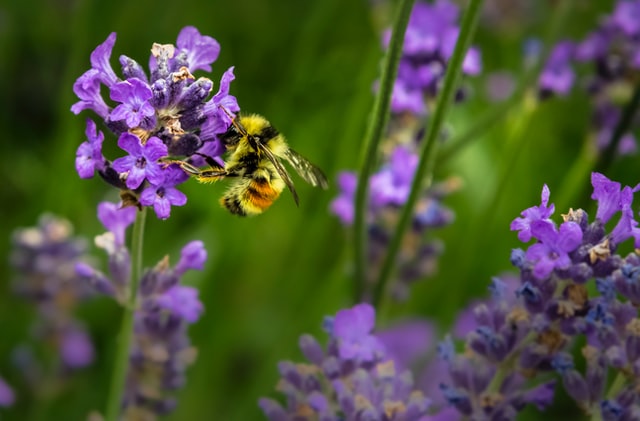
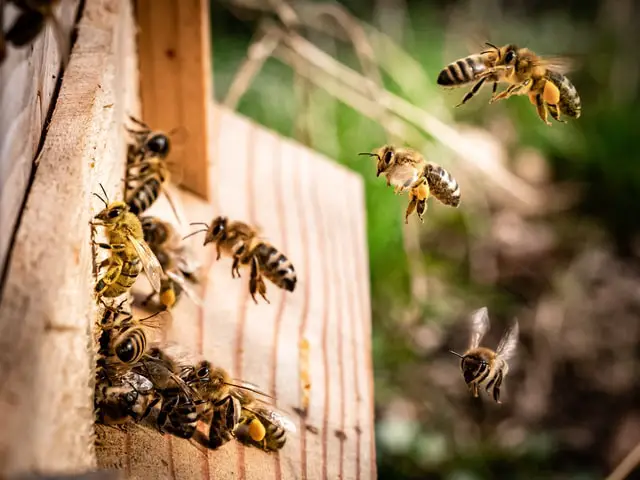
Amazing facts about bees for kids
Now we know the basics let’s take a trip inside the hive to find out some fascinating bee facts for kids and grab our FREE DOWNLOAD.
Bees are the only insects that make us food
They do this by collecting pollen and nectar from flowers and plants and then using their bodies to turn it into honey. The pollen gives the honey a particular flavour, depending on what plant it comes from.
Bees also help pollinate our food. When they visit flowers they collect pollen which they carry to other plants which allows them to reproduce.
Bees are responsible for pollinating about one-third of all foods we eat.
Without them, we wouldn’t have almonds, avocados, blueberries, cucumbers, eggplants, peaches, plums, and strawberries—just to name a few!
Only female bees can sting
Why? Because they’re the only ones with a stinger! Female worker bees are equipped with a barbed stinger that sticks out from their abdomen and can be used
The male bees are called drones and they have no stinger. They have no use for one because they don’t need to defend their hive and are only there to reproduce with a queen bee.
The female always has a stinger though, because she needs to defend her hive against potential predators.
Bees don’t always die when they sting you
Yes, you heard right, we’ve always been taught bees die when they sting, but actually, this isn’t strictly true.
It’s true! Bees’ stings are barbed, so when they sting you, their stinger gets stuck in your skin and extracting it normally kills the bee that stings you but not always.
If a bee stings it’s our natural reaction to swipe it away which normally always kills the bee.
If you’re really brave like the beekeeper in the video below, you can wait for the bee to free its stinger and fly away safely!
Bees flap their wings fast
Bees flap their wings 200 times a second when flying. This is a pretty remarkable feat, considering that most other insects only flap their wings at half this speed.
So how does a bee get its wings to move so quickly?
The answer is in the shape of their wing, which is very different from that of other insects.
Most insects have a single large joint between two sections of their wing, but bees have two joints, allowing them to move their wings much faster.
Bees talk to each other by dancing
Dancing is one of the most important ways that bees communicate with each other. Bees can communicate information about food sources, the location of their hive, and the presence of predators or enemies.
They do this by shaking their bodies in a series of movements.
The way they shake their bodies tells other bees what they want to do, where they want to go, or what they’re thinking.
For example, a bee may want to go outside and collect pollen from flowers, so it will dance on the ground outside of its hive.
Another bee will notice this dancing and join in, then leave with the first bee to gather pollen together.
Some bees have evolved to eat meat!
Who would have thought that a bee could eat meat?! This is a type of stingless vulture bee, which means it’s not a honeybee.
The meat-eating stingless vulture bee can be found in Brazil and Argentina. It looks like any other stingless bee at first glance, but it has some very strange behaviour that we don’t see in any other bees.
How does this bee get its name? Well…it’s pretty much self-explanatory. It eats meat! Not just any meat, it eats the meat from animals after they’ve died, collecting meat much like other bees collect nectar and pollen.
Want to know the really scary part? They make honey from dead animals and the few people that have tried it say it tastes really good! We’re not convinced but hope to try it at some point in the future.
Eating local honey helps with allergies
It turns out that local honey is a great source of pollen, which is what causes all the trouble in the first place. When your body is exposed to pollen, it starts to produce antibodies (antigens) to fight it off.
The more exposure you have to pollen, the more antibodies your body will produce.
So what does this mean for your hay fever situation? By eating local honey regularly, you’ll be exposing yourself to small amounts of pollen at regular intervals—so when spring rolls around and all those flowers start blooming like crazy, your body will be ready!
The ancient Egyptians loved honey
Ancient Egypt was a place where honey was used in many different ways.
The ancient Egyptians used medicinal honey regularly, making ointments to treat skin and eye diseases.
This was also the first time that honey was used as a sweetener for foods like loaves of bread and cakes.
Bees swarm when they need a new home
Bees swarm when they feel their hive is overcrowded, and they want to find a new place to live.
As the weather starts to warm up, many hives start to produce more and more eggs. If there isn’t enough room in the hive, some of these extra bees will leave the hive and form a group called a swarm.
They leave the nest in search of a new spot to call home and make their brand-new colony.
The other half stays behind in and continues to raise new bees and produce honey.
*Amazing bee facts for kids – A single swarm can contain up to 40,000 bees! That’s some serious buzz.
Now you’re all up to date with some amazing bee facts for kids why not download our FREE PDF for further learning?
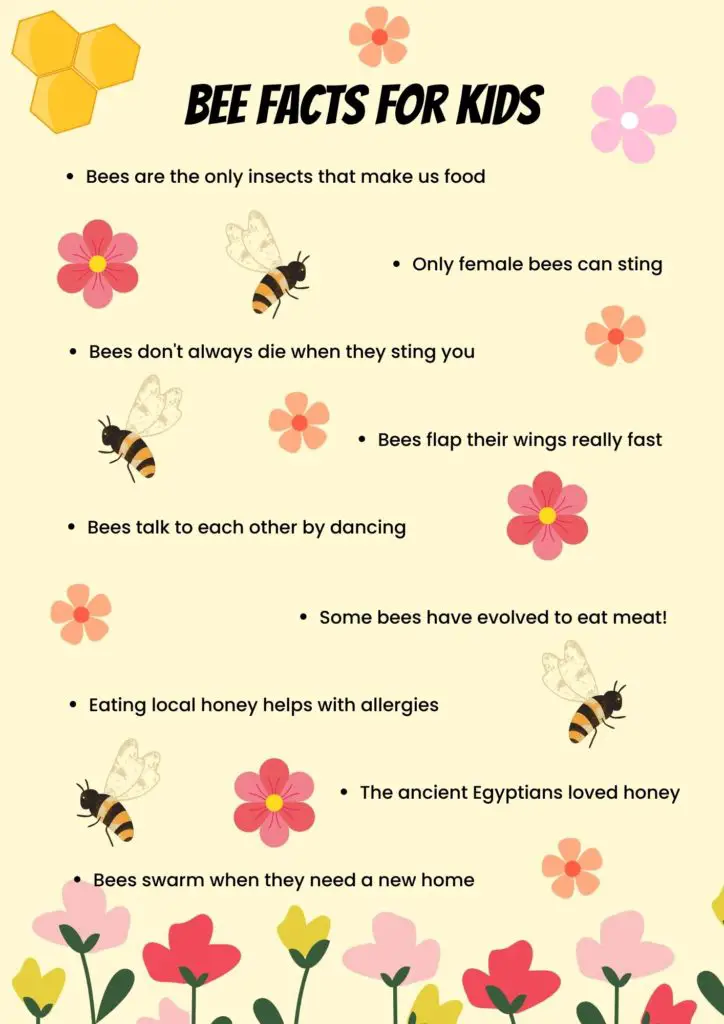
*Additional reading – Visit our next guide for more amazing facts about bees.

